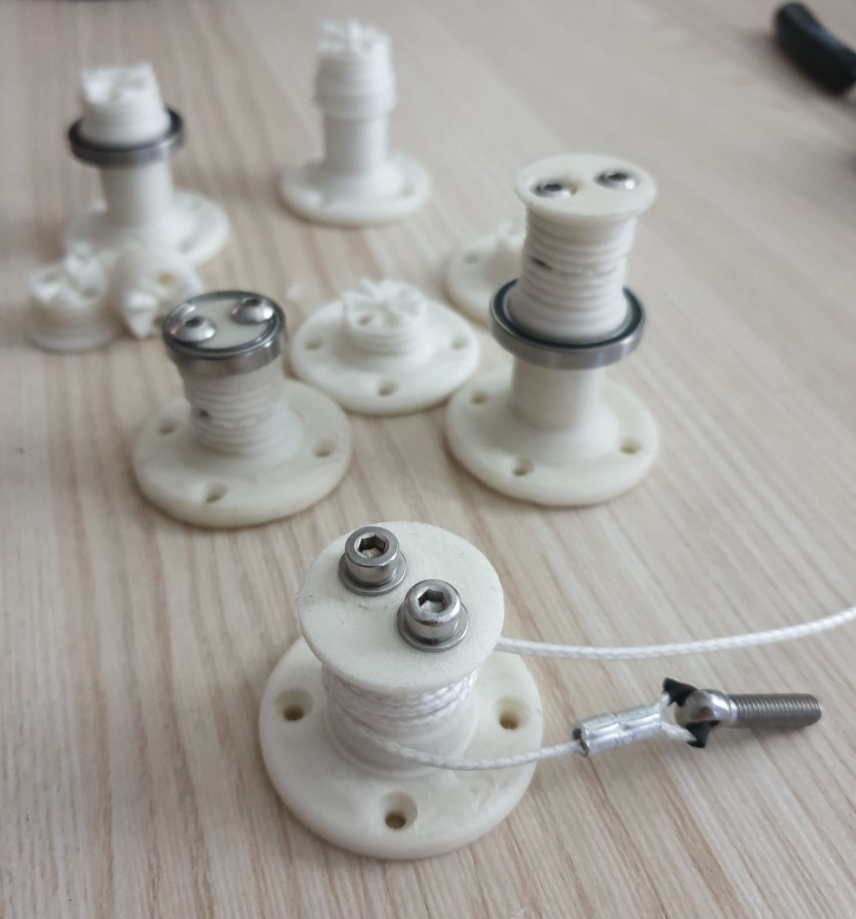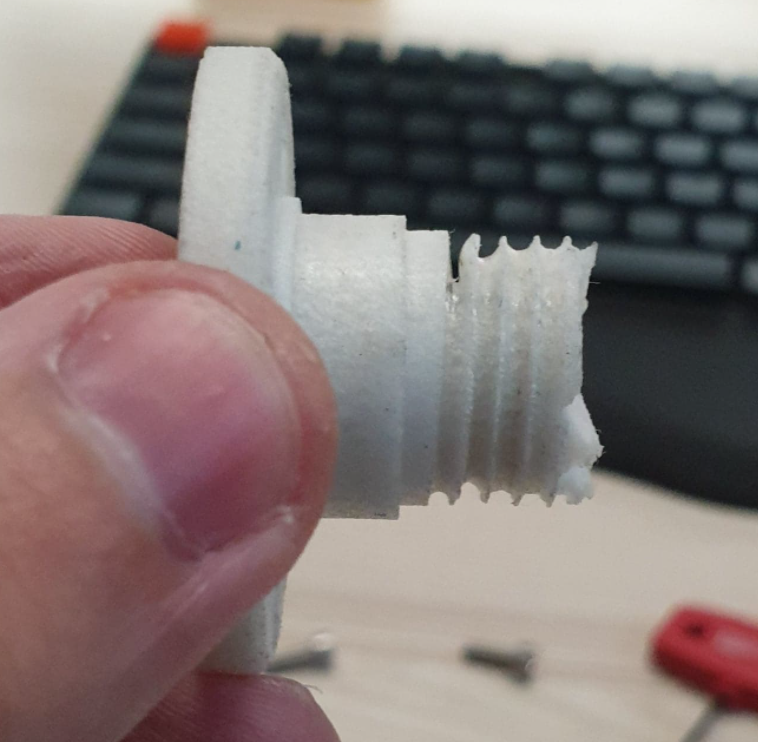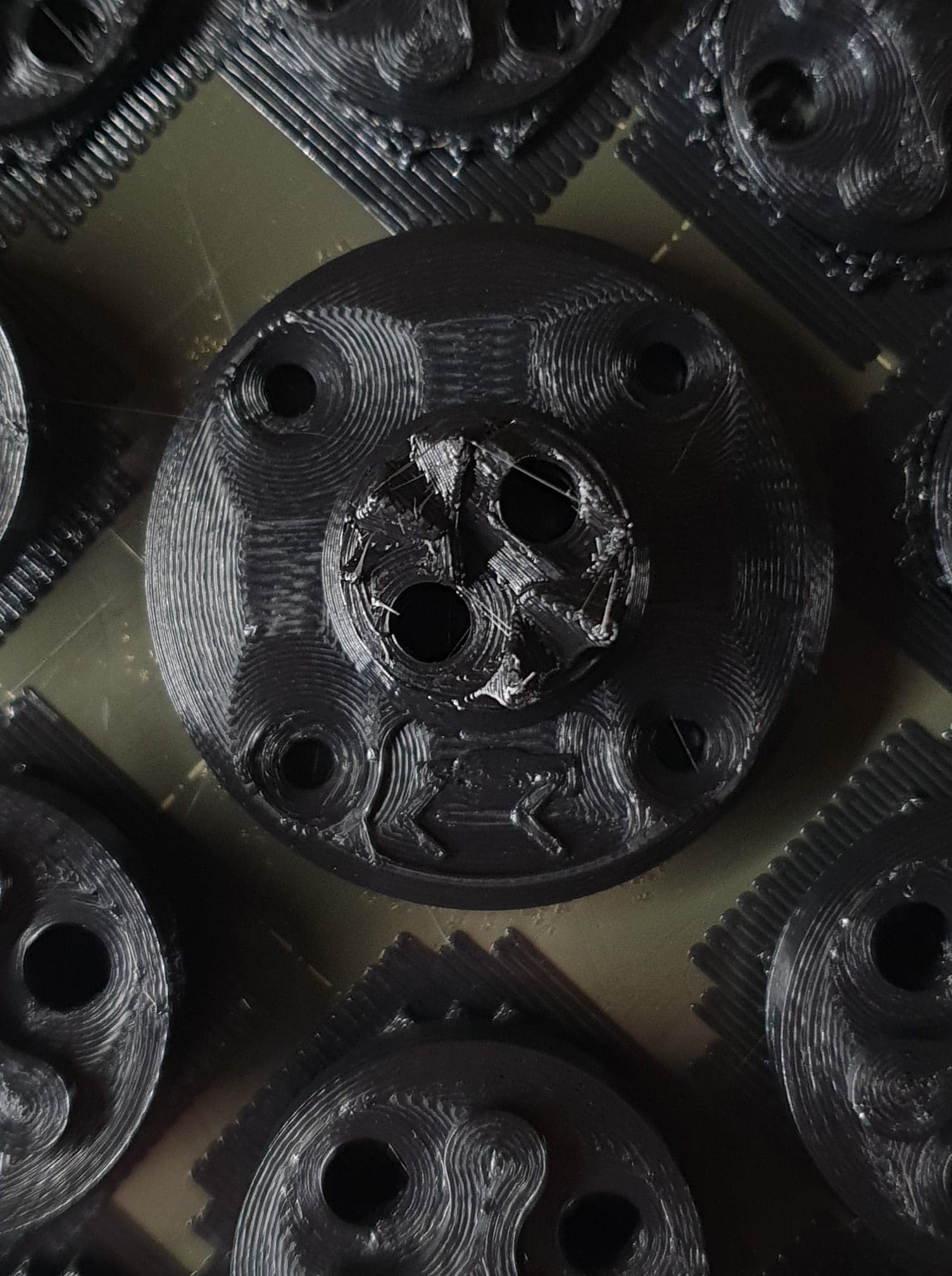The Small drums of Stanley’s Capstan mechanisms are experiencing the highest loads out of all the printed parts on the robot.
That places some high demands on the filament we print them with. We started with just basic PET-G which failed a few times with the earliest designs.
With geometry improvements, we were able to get it to a state where it was no longer failing, but we felt that the safety margin was not high enough.
We first tested Nylon, Nylon blended with Carbon Fiber and Nylon Blended with Glass Fiber ...

Although they did not break along layer lines as PET-G did, they showed definite signs of wear. The grooves were getting worn in, and the Nylons with additives behaved a bit like a sponge that is getting pressed in.

Then we came across the Prusa PC Blend, which turned out to be ideal for our application. It is strong both across and along layer lines. It is stiffer than Nylon, but not so stiff that it would shatter easily like PLA.
It is decently easy to print and with Magigoo for Polycarbonate it prints really reliably. Since we started using PC Blend for our small drums we haven't seen any one of them break nor show any significant signs of wear. Here’s an image of the PC Blend print:

 Ahead
Ahead
Discussions
Become a Hackaday.io Member
Create an account to leave a comment. Already have an account? Log In.
Hey take a look at the GreenTec filaments (for example from Extrudr). They have excellent layer adhesion (fracture across layers), are easy to print and offer great rigidity (youngs modulus of a bit more than 4'000 MPa). I use it regularly for structural parts.
Are you sure? yes | no